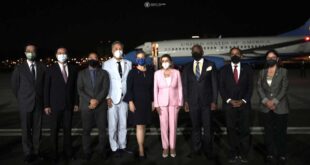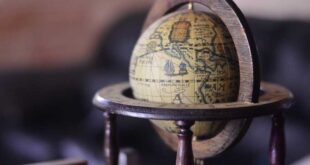The WHO, the World Health Organisation, is poised to declare a pandemic over contagion from the Coronovirus or Covid-19. Walter Ricciardi of the organisation’s executive office explained what it means.
According to Ricciardi, “within seven maximum ten days from the headquarters in Geneva, the WHO will proclaim the pandemic state” in time to “have consolidated data also from Africa and from South America” regarding the number of infections.
The world is currently one step away from the pandemic phase, that is, at level 5 – which is defined as “alert” – which provides for a series of measures – already in place – aimed at containing the spread of the disease through measures such as tracking of possible infected cases and quarantine for the sick. “But we are already moving on to the next phase of mitigation, namely that of reducing the damage since we can no longer block the spread of the virus” continued Ricciardi as reported by Italian daily La Stampa.
Pier Luigi Lopalco, professor of hygiene at the University of Pisa, said that to minimize its impact, the sharing all epidemiological data (new cases, dead, healed) with the WHO and entities from other nations or supranationals such as the ECDC, the European Center for Disease Prevention and Control, would be the most effective way of combatting it.
The European Union are at the third level, the penultimate, regarding the confirmed outbreak (transmission) of the pandemic virus in all the EU member states and widespread contagion that could potentially affect them all.
The state of “pandemic” could mean more limitations to life as we know it. The WHO could ask individual countries to stop certain activities, such as transport by land, even if without obligation of adjustment. And in this case, being international standards on a par with those of the UN, non-compliance would imply sanctions. The WHO could also deploy operators to help in the management of the crisis.
The strategy contemplated by the WHO, however, is not that of a total blockage of transport or the work activity of an entire nation, but it seems that it is directed towards a “Chinese” solution, that is, a series of increasingly stringent blocks the closer to the areas where the outbreaks are prevalent, modeled on what happened in Wuhan and in the province of Hubei.
That means a selective containment, which would therefore see the WHO protocols already used for the emergency of the H5N1 avian influenza of 2005 implemented.
An interdiction zone would be created, where entry or exit is prohibited, in the confirmed outbreaks of the infection, surrounded by a transition zone, or buffer to use the technical term, where particular sanitary surveillance and self-quarantine measures are applied but without limiting the movement of the population.
The impact on the global economy will be huge, and it could be devastating if a situation were reached in which the most coercive measures were used on a large scale. Italy, at this particular moment, is facing a sharp reduction in consumption, and therefore in work.
For the US Centers for Disease Control and Prevention (CDC), Covid-19 already has two criteria out of three to define itself as a pandemic, and in fact on their website they used precisely this term. In addition to being deadly, the virus also has a high reach worldwide.
 Geostrategic Media Political Commentary, Analysis, Security, Defense
Geostrategic Media Political Commentary, Analysis, Security, Defense





